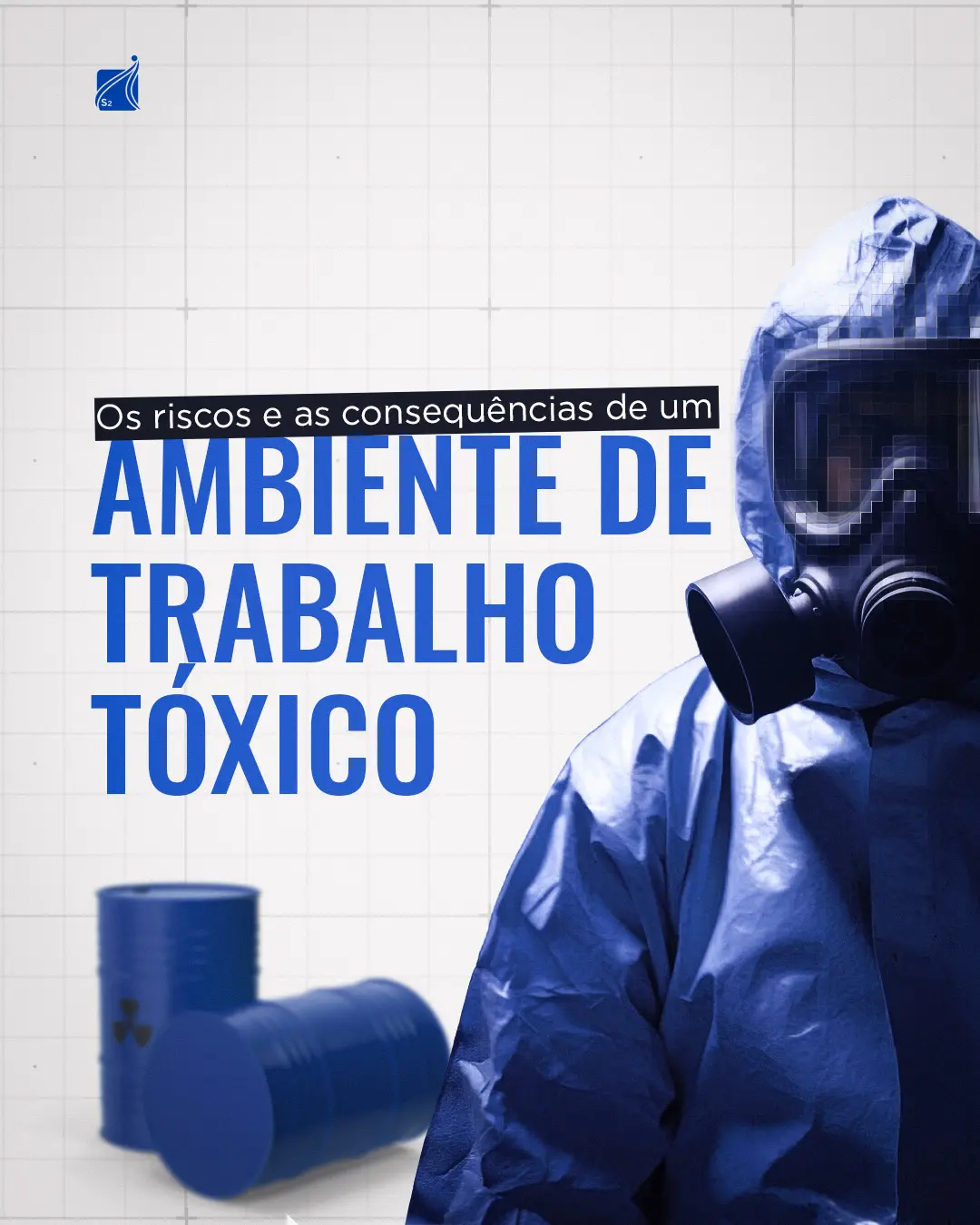
Browse topics
Sexual harassment is a complex issue that generates a lot of debate in companies. That's why it's important to understand what the law says about it and how to deal with it.
This type Harassment involves practices that constrain someone in order to obtain sexual advantages. To do this, the perpetrator uses influence or superior status, such as hierarchical position at work, etc.
And do you know what the law says about sexual harassment in professional environments? Read on to find out more!
What is harassment?
Harassment is a serious situation that generates a series of physical, psychological and financial consequences. It can be present in the day-to-day running of an organization, causing discomfort, discrimination, humiliation and even exposure of professionals.
In other words, any and all unwanted behavior and abusive conduct practiced in corporate environments is considered harassment.
In this way, the problem reproduces practices rooted in the social, cultural and economic context. It affects everyone who suffers as a result.
Harassment can be manifested through words, behavior, gestures, acts or writings. The acts can affect people individually or as a group, it all depends on the context.
In general, the situation can be one-off or repeat itself over a longer period of time. This puts workers' harmony and well-being at risk.
What about sexual harassment?
It involves practices that constrain someone in order to obtain sexual advantages. To do this, the perpetrator uses influence or superiority, such as a hierarchical position at work, etc.
This type of harassment can occur in a variety of ways, through words, proposals, gestures and other forms that embarrass someone. As a result, the victim's social value at work, privacy, intimacy, honor and other aspects can be compromised.
It is not a rule that the victims are women, although surveys such as Aberje's show that they are the majority. In addition, sexual harassment does not have to occur repeatedly; a single act is enough to be classified as such.
Is sexual harassment a crime?
Sexual harassment is a crime, according to the Article 216-A of the Penal CodeThe law has been in force since May 15, 2001. Practitioners can be imprisoned for up to two years.
However, if the victim is under 18, the penalty is increased by a third. Under the age of 14, the case is already classified as rape of a vulnerable person and carries an even higher penalty.
And there are other particularities that can make the crime more punishable. For example, if it was committed jointly by two or more people and if the victim is related.
In order to penalize the perpetrator for this conduct, it is necessary to prove some level of hierarchy over the victim and the practice, such as a promise of favor or a threat.
Under labor law, agents can be penalized by having their employment contract terminated. Along with this penalty, the victim may be entitled to compensation for the damage suffered.
In fact, under labor law, which differs from criminal law, it is not necessary for the perpetrator to be a superior. In other words, sexual harassment can also occur horizontally, between colleagues in the same position. hierarchy at work.
What obligations does the law impose on sexual harassment?
The most recent implementation was that of MTP Ordinance No. 4.219which came into force on March 20, 2023.
And it modifies previously stipulated rules obliging companies to promote training to combat sexual harassment, preventive actions and to implement reporting channels in the workplace. Take a look:
- Include issues related to preventing and combating sexual harassment and other forms of violence at work in their activities and practices;
- Training to prevent and combat sexual harassment and other forms of violence at work;
- Inclusion of rules of conduct regarding sexual harassment and other forms of violence in the company's internal rules, with wide dissemination of their content to male and female employees;
- Establishing procedures for receiving and follow up on complaints to investigate the facts;
- At least every 12 (twelve) months, training, orientation and awareness-raising activities for employees at all levels of the company on issues related to violence, harassment, equality and diversity in the workplace.
In other words, the law obliges companies of different sizes and segments to adopt mechanisms to comply with the law.
In addition Ordinance No. 4.219 of the Ministry of Labor and Social Security also changes the name of the Internal Accident Prevention Commission (CIPA) to the Internal Accident and Harassment Prevention Commission.
This means that organizations need to be prepared!
What is considered sexual harassment?
As mentioned, sexual harassment can be represented by various types of embarrassment with a sexual connotation. These include forcing the victim to do something unwanted.
However, when physical violence and serious threats are used, the crime is already characterized as rape.
If this is not obligatory, practices such as pestering and insisting on sexual proposals are still considered sexual harassment. In addition, they must involve a threat (explicit or implicit) that harms the victim professionally.
Other cases of sexual harassment can occur without a threat, such as insistence from someone in a higher position promising advantages.
For example: "I can promote you if you agree to have a relationship with me". Likewise: "If you don't agree to have a relationship with me, I can fire you".
It must be made clear that the victim does not have to give in to the blackmail and obtain the promised advantages for the case to be considered sexual harassment. In other words, the crime occurs when the perpetrator embarrasses someone in this way.
In addition, there are special cases that can be confused with sexual harassment, requiring a careful analysis. These include a superior who has fallen in love with a female employee and had no intention of obtaining sexual favors, due to the hierarchy.
How to identify cases of sexual harassment at work?
As you can see, sexual harassment is not always explicit, which can make it difficult to identify. It is therefore all the more important to keep an eye on:
- Sexual comments and jokes;
- Invitations with possible ulterior motives;
- Unnecessary touching without consent;
- Sexist jokes;
- Embarrassing comments;
- Etc.
What are the types of harassment?
The most common types of harassment currently practiced in different corporate environments are: bullying e sexual harassment. Find out more about each of them below:
- Bullying: abusive conduct and acts, such as words, swearing, accusations, behavior, among others, that cause exposure, humiliation and embarrassment. The aim is to destabilize the victim through direct or indirect actions;
- Sexual harassment: practices that generate sexual innuendo, blackmail and intimidation in the workplace, which can occur in order to obtain a sexual advantage or favor. The main victims are still women, but sexual harassment can happen to any worker, regardless of gender.
What are the risks of harassment for companies?
Harassment has a number of consequences and risks for both employees and companies. In the first case, the situation can affect the employee's mental and physical health.
Victims can suffer from stress, loss of self-confidence, panic disorderloss of desire to work, anxiety, depression, burnout and exhaustion.
Harassment can destroy an employee's joy and will to live and, in more serious cases, can lead to suicide.
For the employer, harassment affects the productivityIt also affects profits and the well-being of the entire organization. All this is reflected in dissatisfaction, less engagement and motivation among the team.
Over time, the harassment can become worse, causing the company to lose good talent and face the labor courts, causing financial and image damage.
What are the main preventive actions?
Currently, cases of harassment can be combated through some preventive actions.
For example, HR can disseminate information materials and create educational programs for the entire team, since knowledge is an efficient tool in this case.
In addition, create anonymous reporting channels so that victims feel safe to talk. With this, HR can identify the cases and deal with them quickly, without the organizational culture is affected.
Provide specific training on harassment, such as that offered by the IPRC Brazilis also an excellent alternative for companies. The topic is approached in a dynamic and interesting way, bringing real involvement with employees.
Another possibility is to adopt the Integrity Test in selection processes to reduce the risk of hiring harassers. Or even those who display unethical and inappropriate behavior.
The PIR, for example, is a test that identifies behavioral triggers that lead people to commit certain practices on a daily basis, such as harassment. It is the only scientifically validated Integrity Test on the market and is available worldwide in different languages.
Finally, remember! Harassment is a problem that causes a lot of damage to companies and employees. It's important to take action to prevent it, as this makes the work environment and the organizational climate more positive and harmonious. This leads to the highest levels of productivity and motivation.



